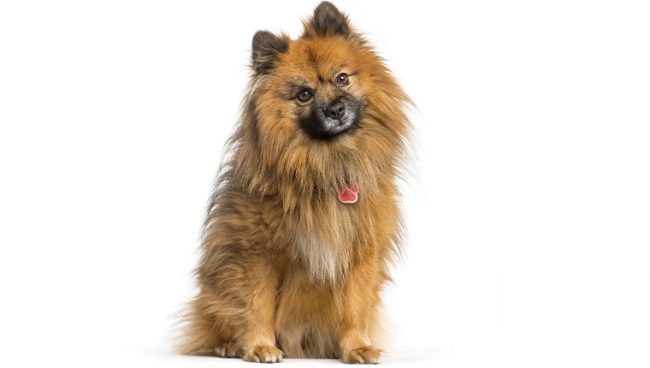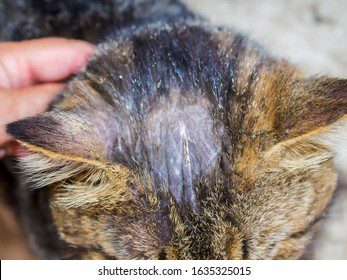
What and how to feed a spitz at different ages so that there are no health problems
We discuss the topic on our forum.
The Spitz is a dog breed that belongs to the fourth section of the fifth group according to the classification of the International Kennel Federation. These dogs are direct descendants of the peat dog that lived back in the Stone Age.
There are several varieties of Spitz, which differ in size and color:
- Wolfspitz. The color is grey. Height at the withers – 0,43-0,55 m;
- Grossspitz (Big Spitz). Reaches 0,42-0,5 m at the withers. It has a white, brown or gray color.
- Mittelspitz (Medium Spitz). The height at the withers is 0,3-0,38 m. The color is orange, gray, brown, black, white, etc.
- Kleinspitz (Small Spitz). The height at the withers is 0,23-0,29 m. The color is varied: from black, white, to orange, black, brown, etc.
- Zwergspitz (Pomeranian, Miniature Spitz). The height at the withers is 0,18-0,22 m. The color is orange, white, gray, brown, etc.
All Spitz, regardless of variety, have lush fur with a very soft undercoat, they look like a Staffordshire Bull Terrier, of course we are joking)))). In terms of personality, these dogs are very affectionate and friendly, making them ideal companions. Spitz are very smart and easy to train, so they are great for beginner dog lovers. In addition, these dogs always get along well with children.
In terms of health, Spitz, unlike other modern dog breeds, suffer less from congenital diseases and practically do not have a predisposition to any disease. However, one of the most common problems is the tendency of these dogs to become obese, which is especially true for the Kleinspitz and Zwergspitz. And to avoid this, you need pay close attention to your dog’s diet, as well as the level of her physical activity.
Contents
When choosing a diet for a dog, several factors should be considered, such as the dog’s age, height, weight, and level of exercise. However, there are rules that apply to the nutrition of the Spitz in any case.
forbidden food
There are a number of foods that are not digested by the dog’s body, can lead to health problems, injure the organs of the digestive system, and also reduce the level of digestibility of nutrients. Under no circumstances should a Spitz be fed:
- fatty meats – pork and lamb (they are poorly digested and lead to obesity);
- milk (spitz does not have lactose in the body – an enzyme that is responsible for the digestion of milk);
- legumes (they impair the absorption of vitamin D, which is necessary for the normal development of the skeleton);
- bones (they can damage the esophagus and stomach);
- smoked and boiled sausage, sausages;
- smoked and salted fish;
- spices and seasonings;
- any fried, pickled and spicy food;
- sweet (flour products, chocolate, sugar, sweets, etc.);
- potatoes;
- citrus;
- juices;
- barley, semolina and millet;
- any products with a high content of preservatives and artificial colors.
- expired products.
For the full functioning of the body, the dog needs to receive proteins, carbohydrates, fats in moderation, as well as trace elements and other useful substances. And in order to provide the Spitz with all this, it is necessary include the following foods in his diet:
- Meat: lean beef, veal, lamb, turkey, chicken. It is the main source of proteins and trace elements.
- Offal: chicken or beef heart, veal or chicken liver, tripe (1 time per week). Offal is a source of trace elements and vitamins, especially A (large amounts in the liver).
- Eggs: chicken, quail (2 pcs per week). They are a source of protein, vitamins D, E, A, B6, B2, B12, trace elements of calcium, magnesium and iron.
- Sea fish, squid. They serve as the main source of essential amino acids, trace elements of iodine, phosphorus, magnesium, fluorine, calcium, iron, vitamins D, E, A, B12, B6.
- Cottage cheese (fat content not more than 10%), kefir (fat-free). They contain calcium, potassium, iron, magnesium, manganese, zinc, phosphorus, copper, molybdenum, vitamins B2, B3, B1, B6, B12, B9, C, E. H, PP, as well as proteins.
- Greens: parsley, dill, spinach. It contains a large amount of vitamins PP, C, E, B2, B1, A, potassium, calcium, phosphorus, as well as folic acid and beta-carotene, which increase immunity and improve vision.
- Fruits: bananas, apples, apricots, melons, persimmons; dried fruits.
- Vegetable: carrots, beets, cabbage, pumpkin, zucchini.
- Olive oil (to season vegetable salad with a very small amount).
- Kashi: rice, buckwheat, oatmeal (no more than 10% of the daily diet).
How to cook food for a spitz?
In no case should meat be fried or stewed. Beef (lean) must be scalded with boiling water or give raw older dogs. The breast of a turkey or chicken must be boiled, and the skin must also be removed from it.
As for the fish, it must be boiled and all the bones carefully removed from it before giving it to the dog.
Eggs should be boiled, you can also give a raw yolk.
By-products should be present in the diet of the Spitz in moderation, they should in no case serve as a substitute for meat, which is mandatory for dogs to eat. This is especially true of the liver, which contains a large amount of minerals and vitamins. If you give it too much, the dog may suffer from diseases caused by an overdose of vitamins and minerals. Spitz is not recommended to feed raw offal, they must be boiled.
Vegetables can be steamed, greens can be raw.
The diet of the Spitz should consist of 2/3 of food containing protein (meat, cottage cheese, eggs, fish) and 1/3 of cereals, vegetables and fruits. All these components are prepared separately, they can be mixed directly during feeding.
How often to feed a spitz?
It depends on his age:
- a puppy aged 1-2 months must be fed 6 times a day;
- at 2-3 months – 5 times a day;
- at 3-6 months – 3-4 times a day;
- at 6-8 months – 2-3 times a day;
- adult Spitz (from 8 months) should be fed 2 times a day.
The portion that a dog consumes is purely individual and depends not only on the level of physical activity and the size of the dog, but also on the characteristics and condition of its body. Determine the amount of food, which needs to be fed to the spitz, at one time is easy. If after eating food there are malnutrition in the bowl, then the portion must be reduced. In no case should you leave uneaten food in a bowl until the next day – it must be removed immediately. If the dog licks the bowl after feeding for a long time and carefully, then the portion should be increased.
How to properly feed a puppy?
At 2-3 months, Spitz puppies still cannot eat all the foods that an adult dog can consume. It is best to feed a puppy only with low-fat boiled meat, steamed vegetables, buckwheat and rice, a small amount of cottage cheese with kefir, boiled yolk (1-2 pieces per week). Also, in addition to meat, cartilage of goats and calves will be useful.
Choice of dry dog food
All of the above rules apply to feeding the Pomeranian with natural products, but there is an alternative – feeding with dry food. The choice of food must be approached very carefully, you must definitely read the composition.
What should be the composition of the feed:
- In the first place should be meat, its type and percentage must be indicated (at least 25%).
- Vegetables and cereal products should be present in amounts up to 30%, it should be detailed which vegetables and cereals are present in the feed.
- Vitamins (mandatory presence of vitamins A, D, C, E, PP, all from group B).
- Macro- and microelements (calcium, magnesium, phosphorus, iron, potassium, iodine, etc.)
- Natural preservatives (extracts and oils of herbs, vitamins C, E).
This standard can be met only premium and super premium food. Economy-class feeds usually contain artificial dyes, flavors and preservatives, slaughterhouse waste (horns, hooves, etc.), fillers that do not carry any nutritional value, but only clog the stomach and intestines (this is cellulose, crushed nutshells and etc.). In no case should you feed a Spitz with such cheap and very harmful food.





